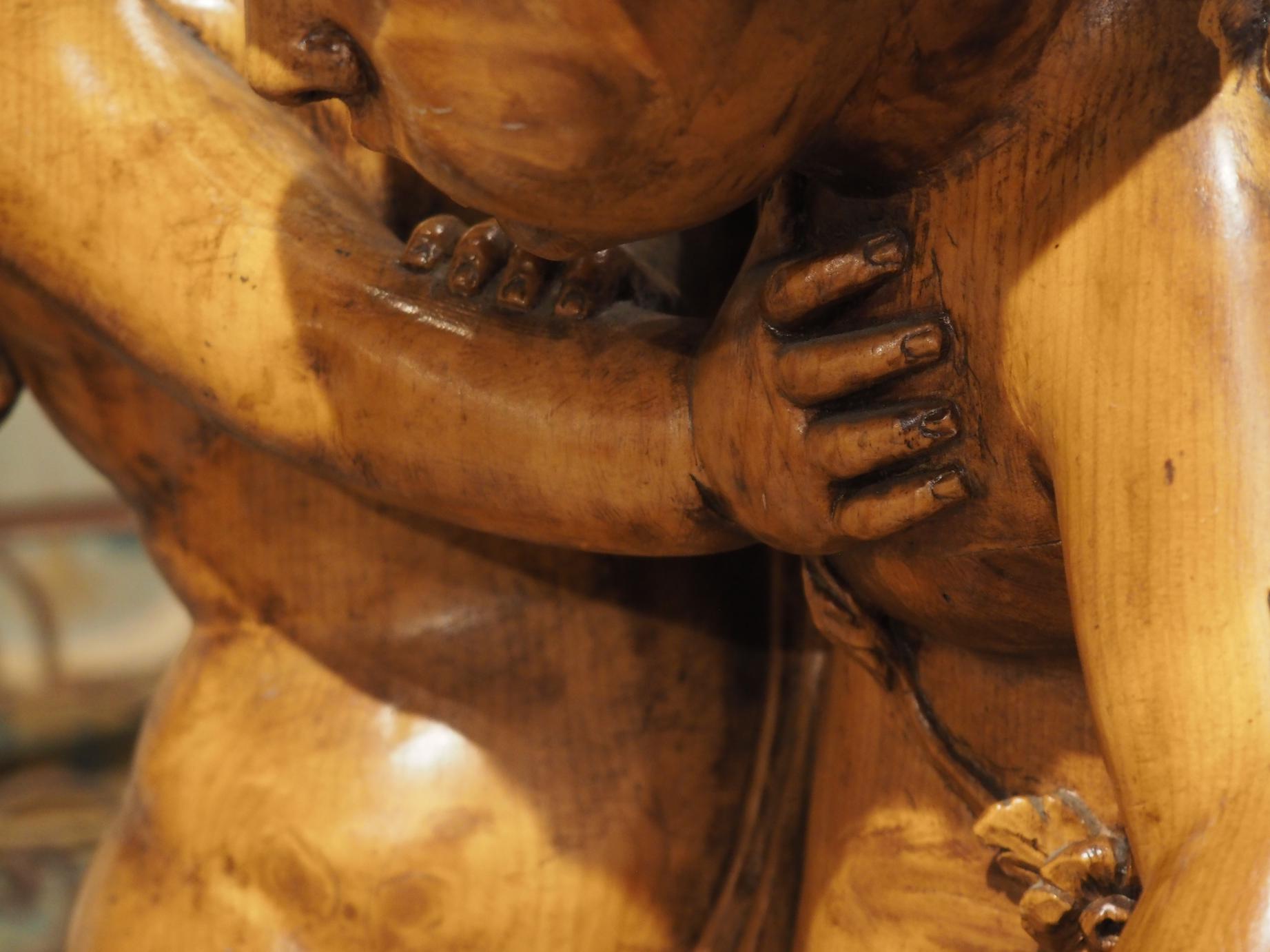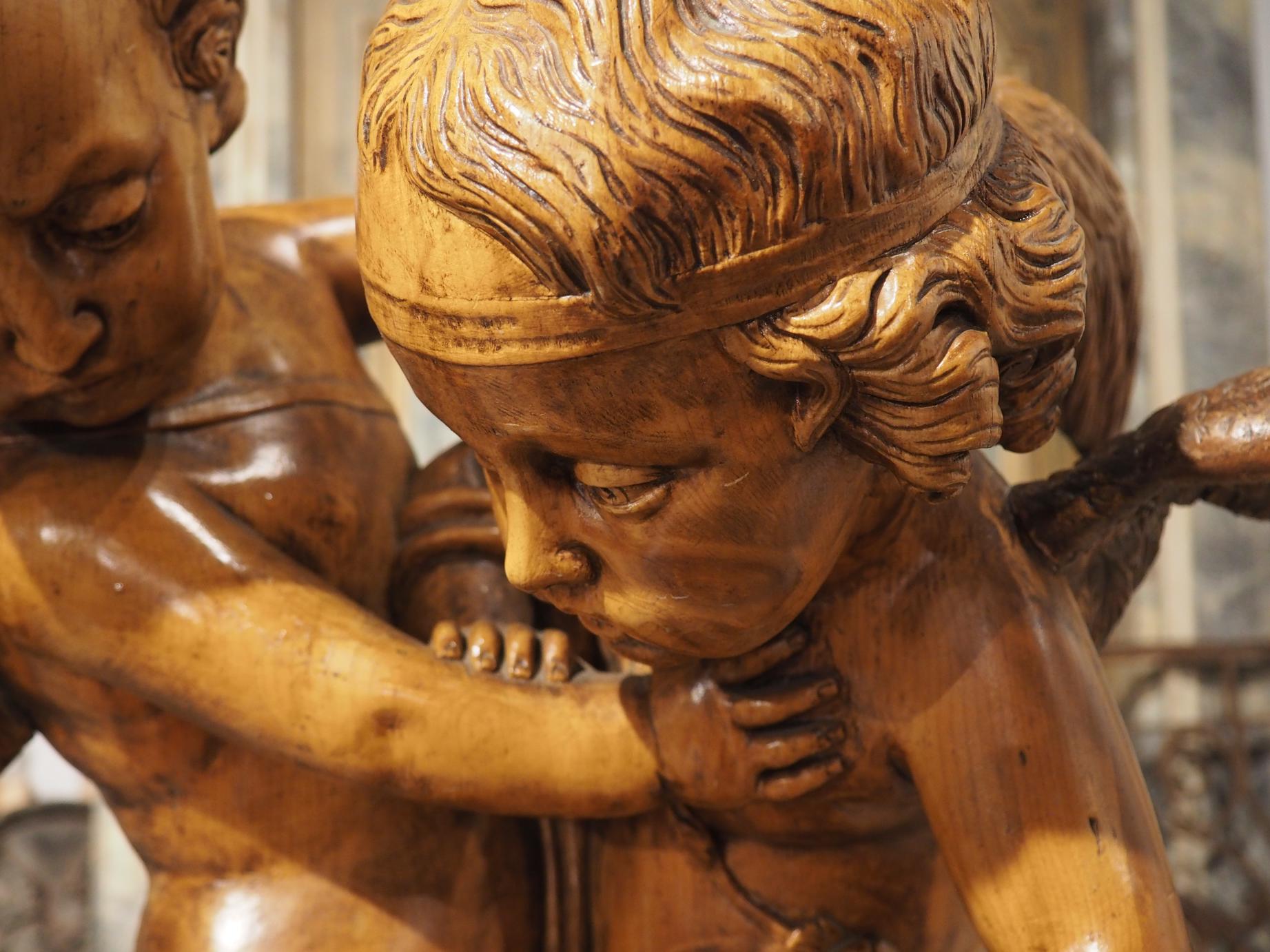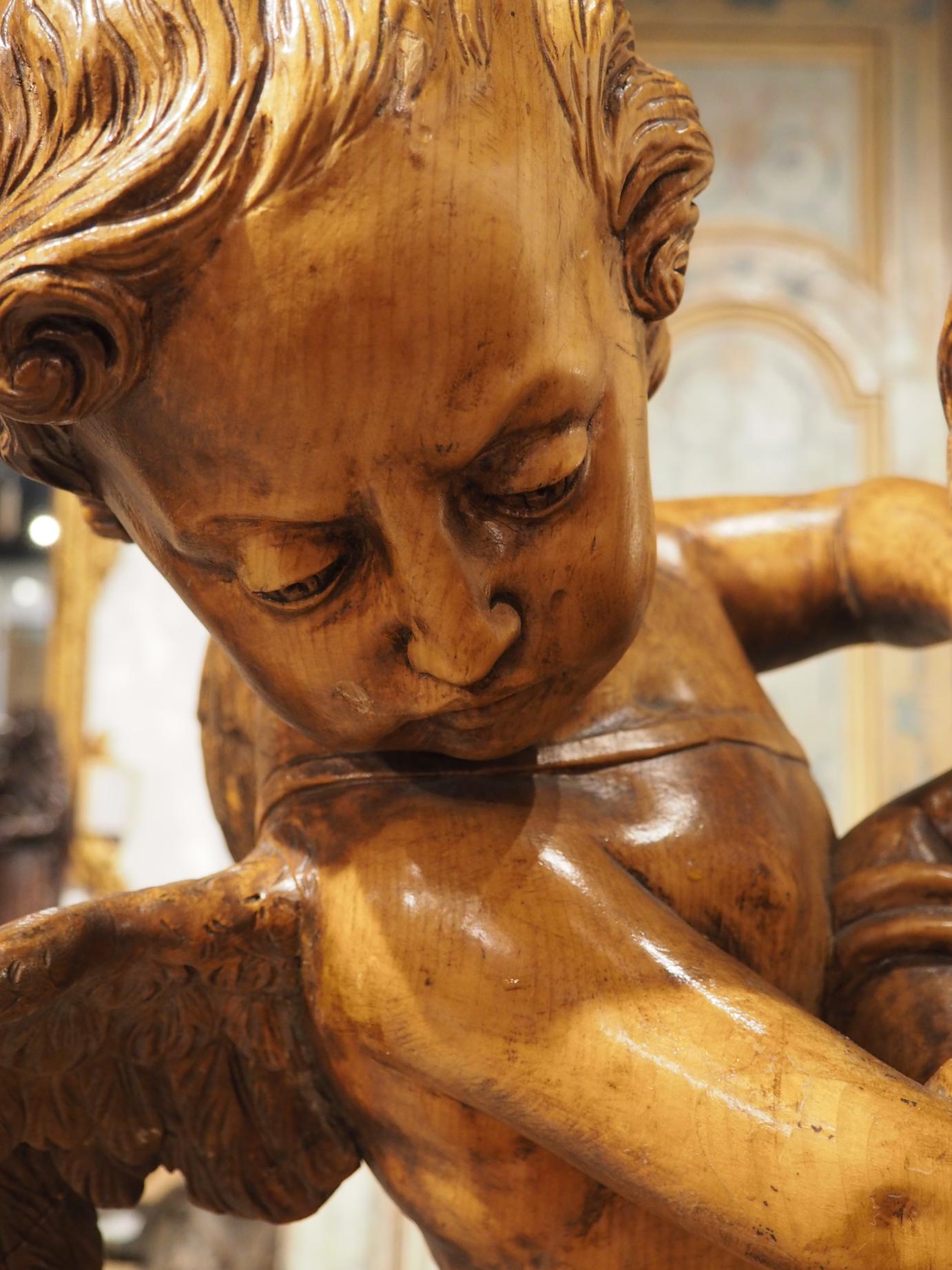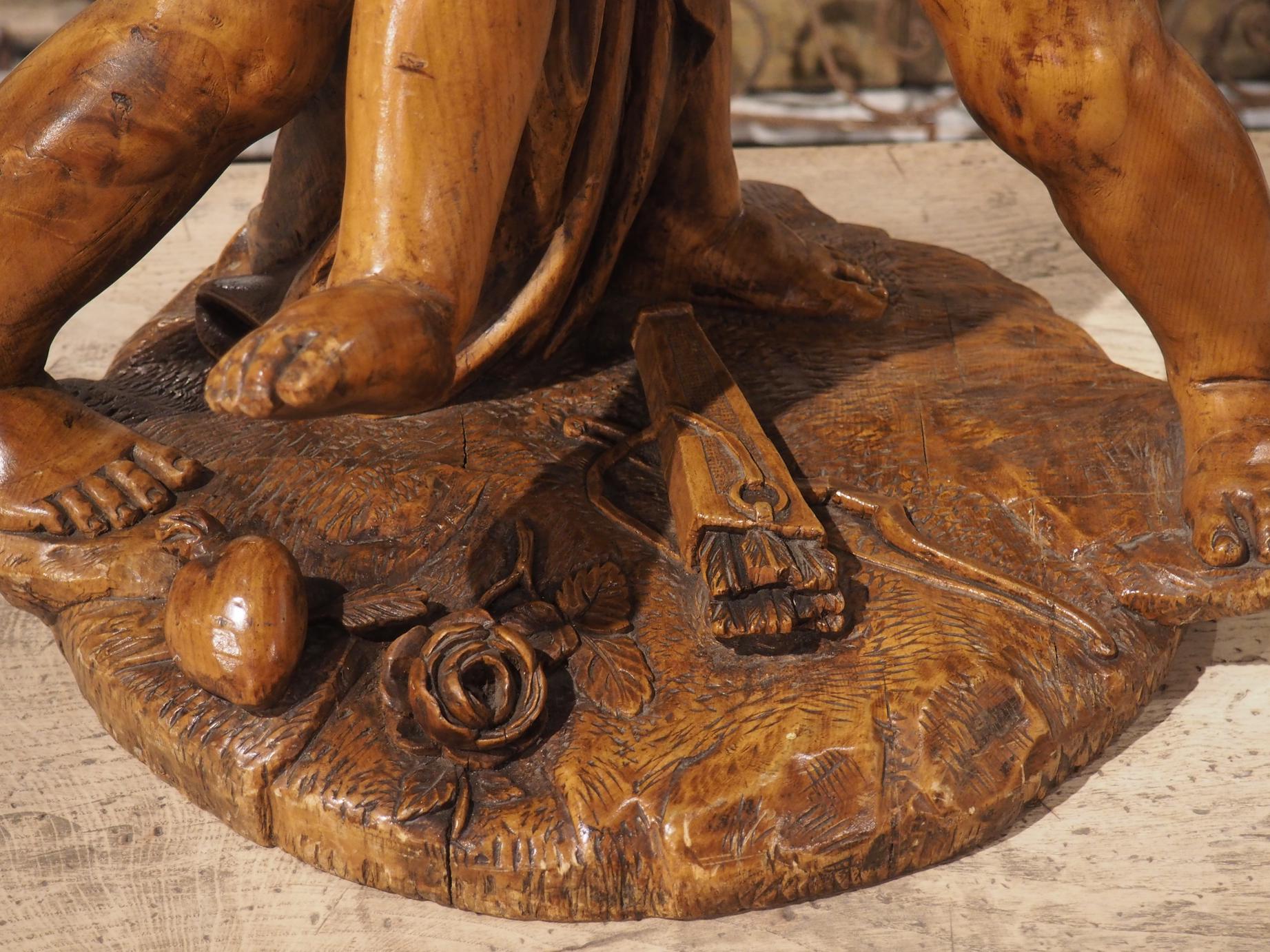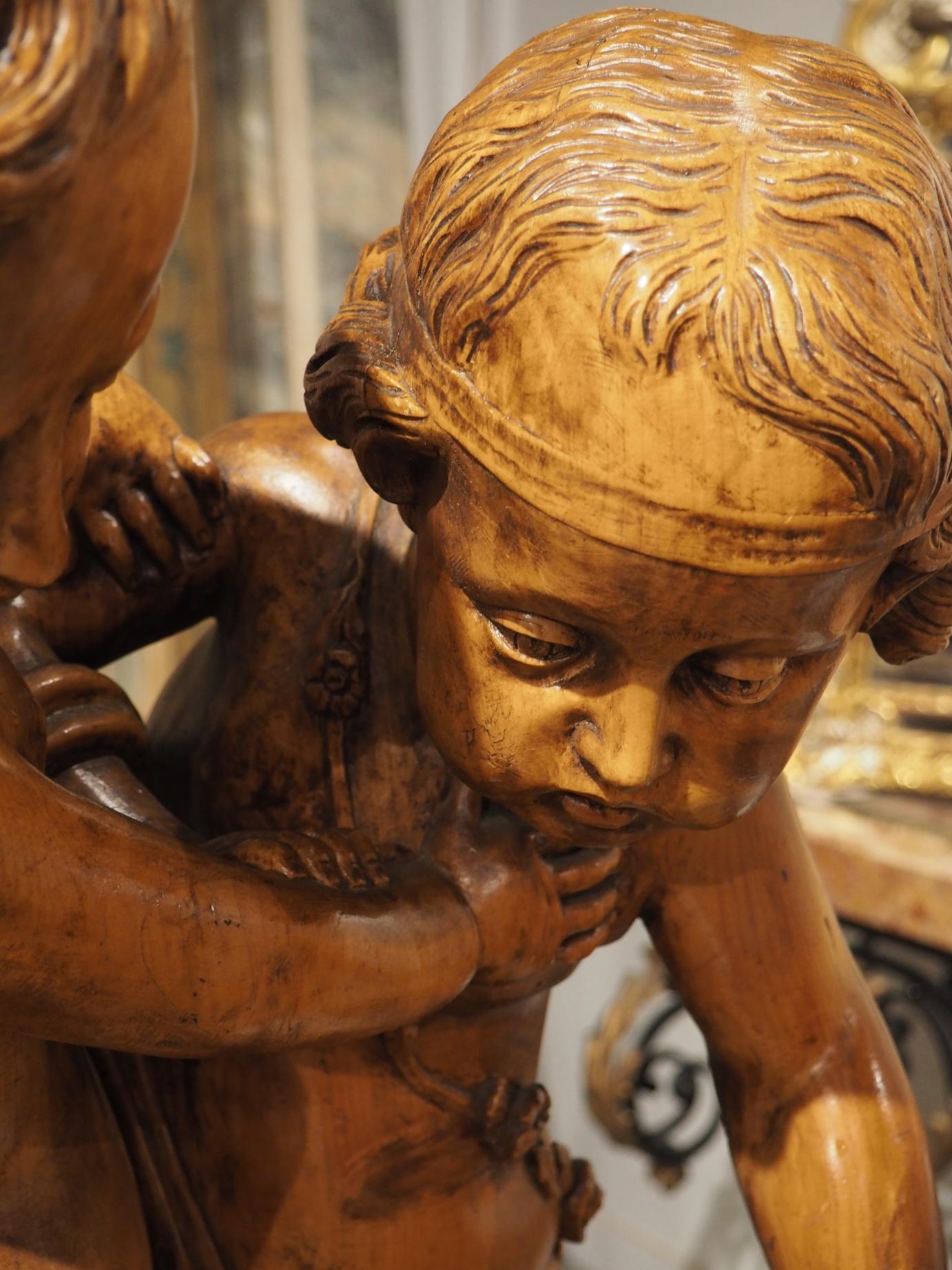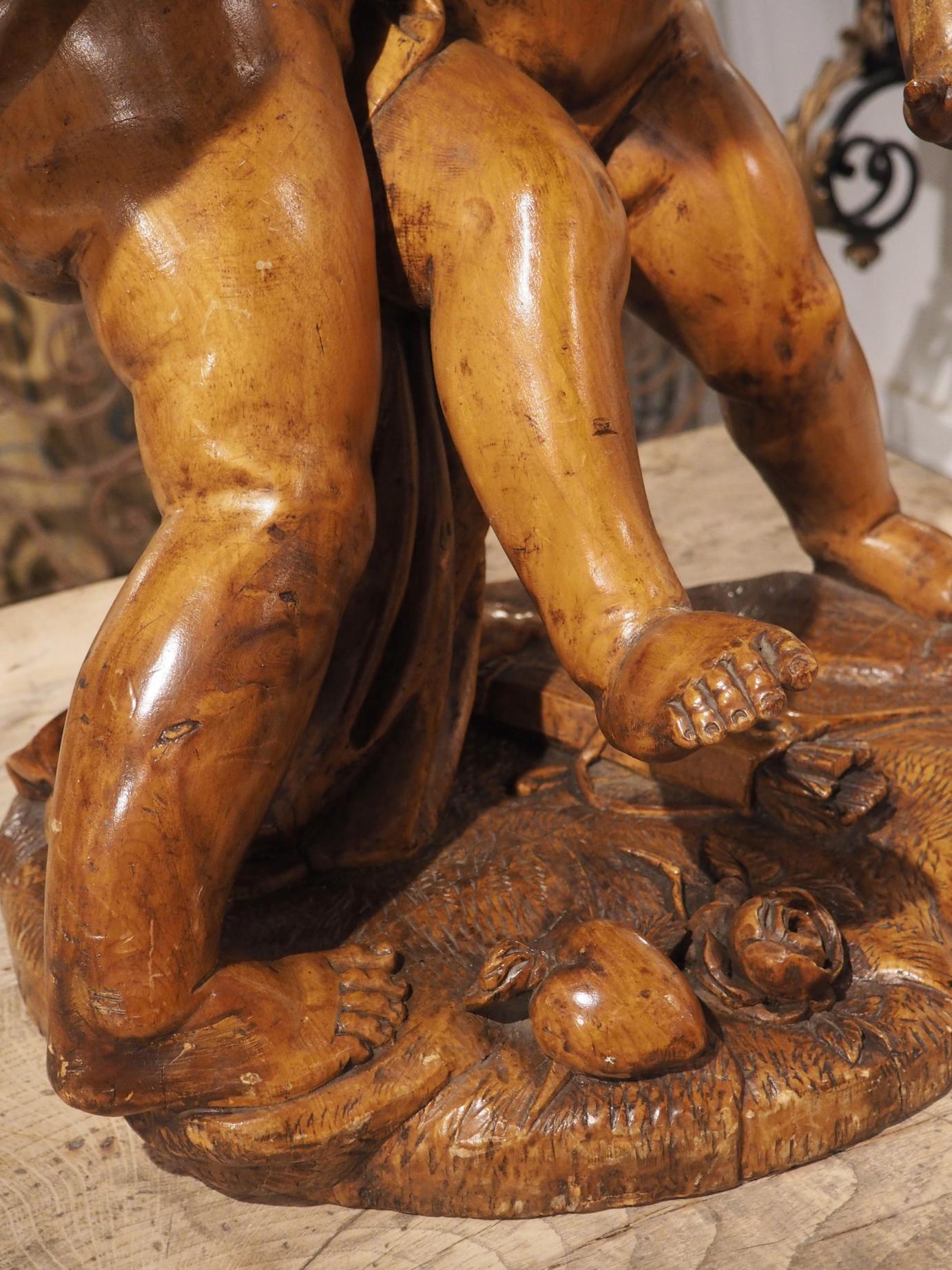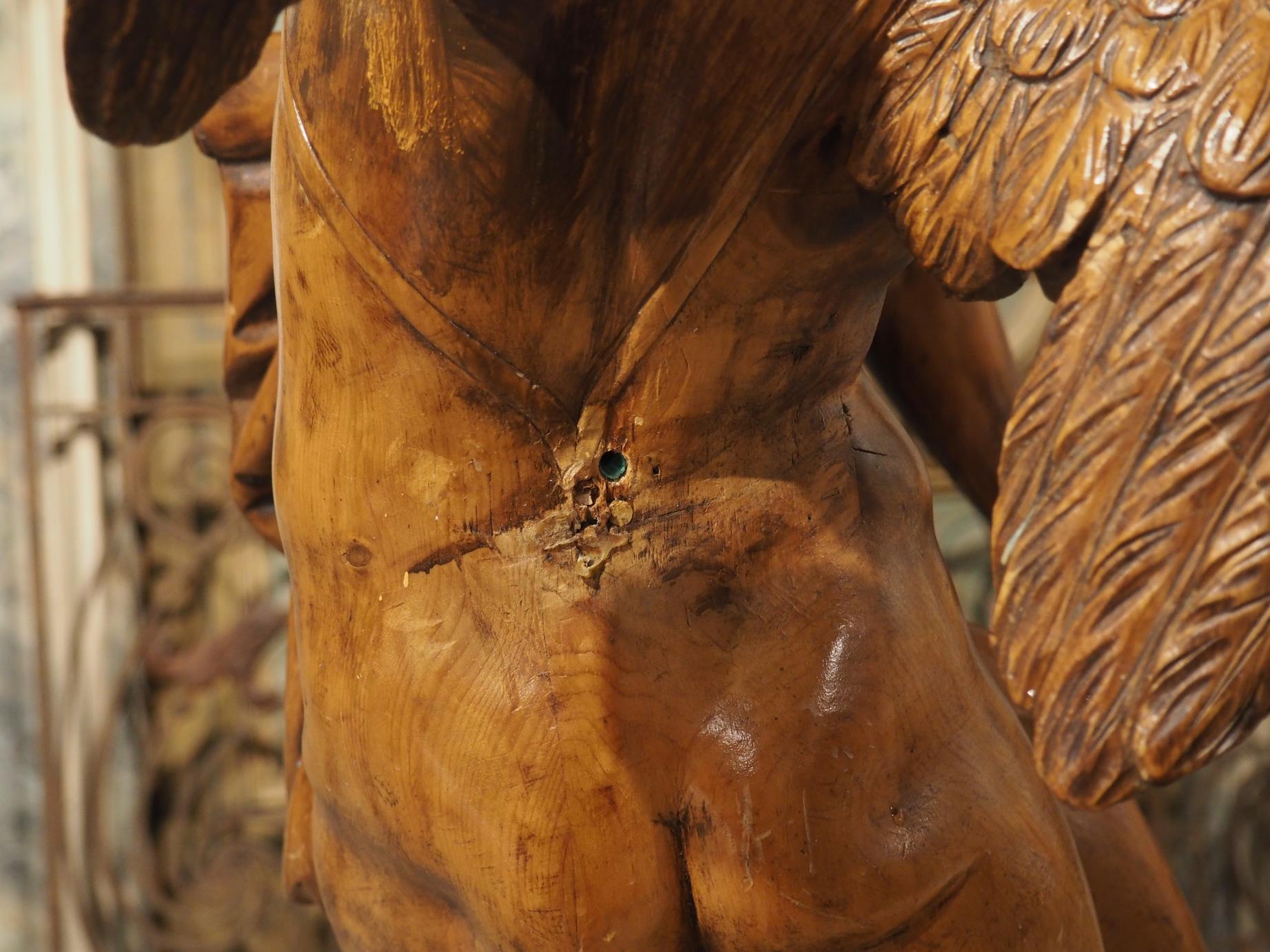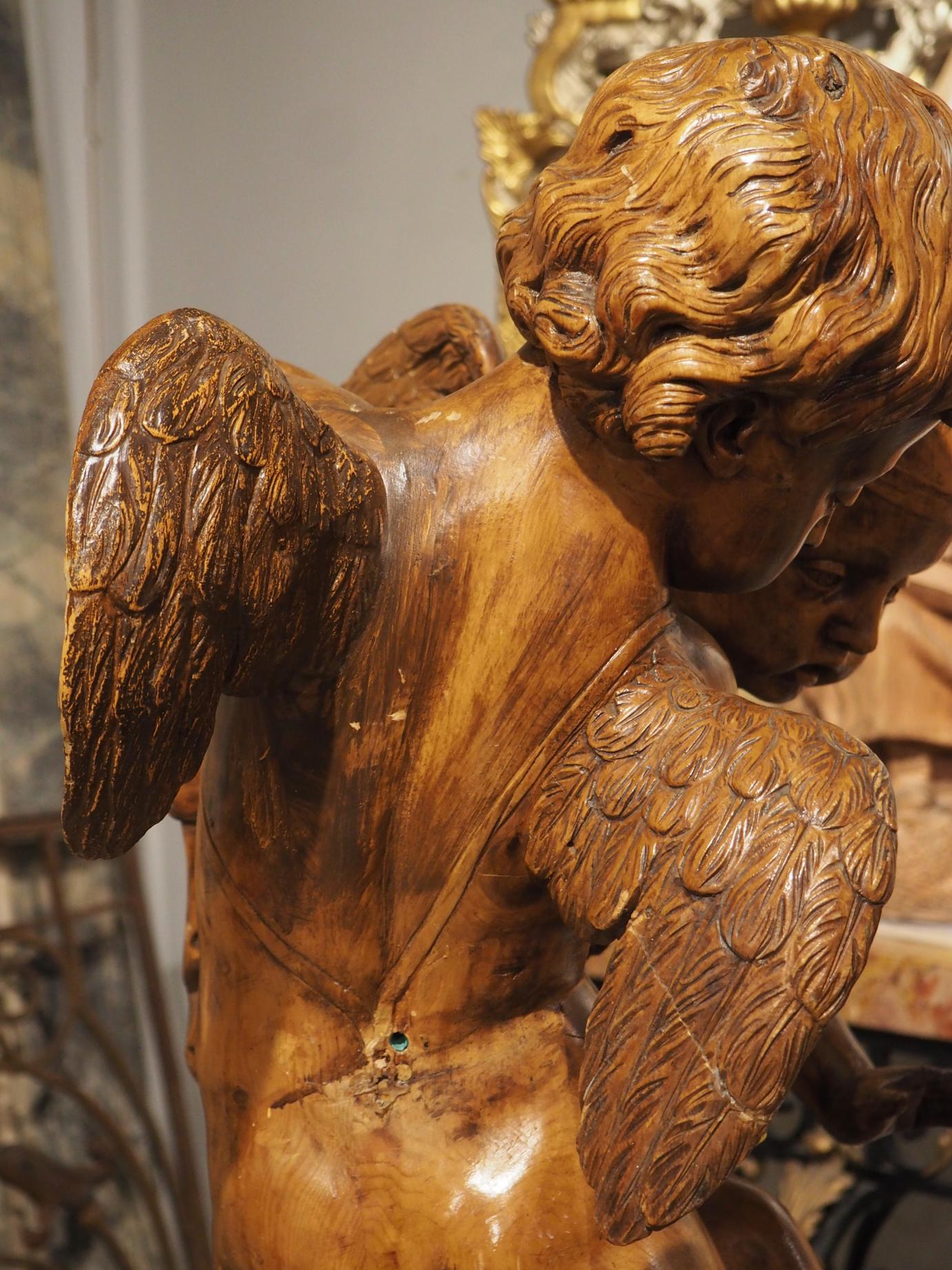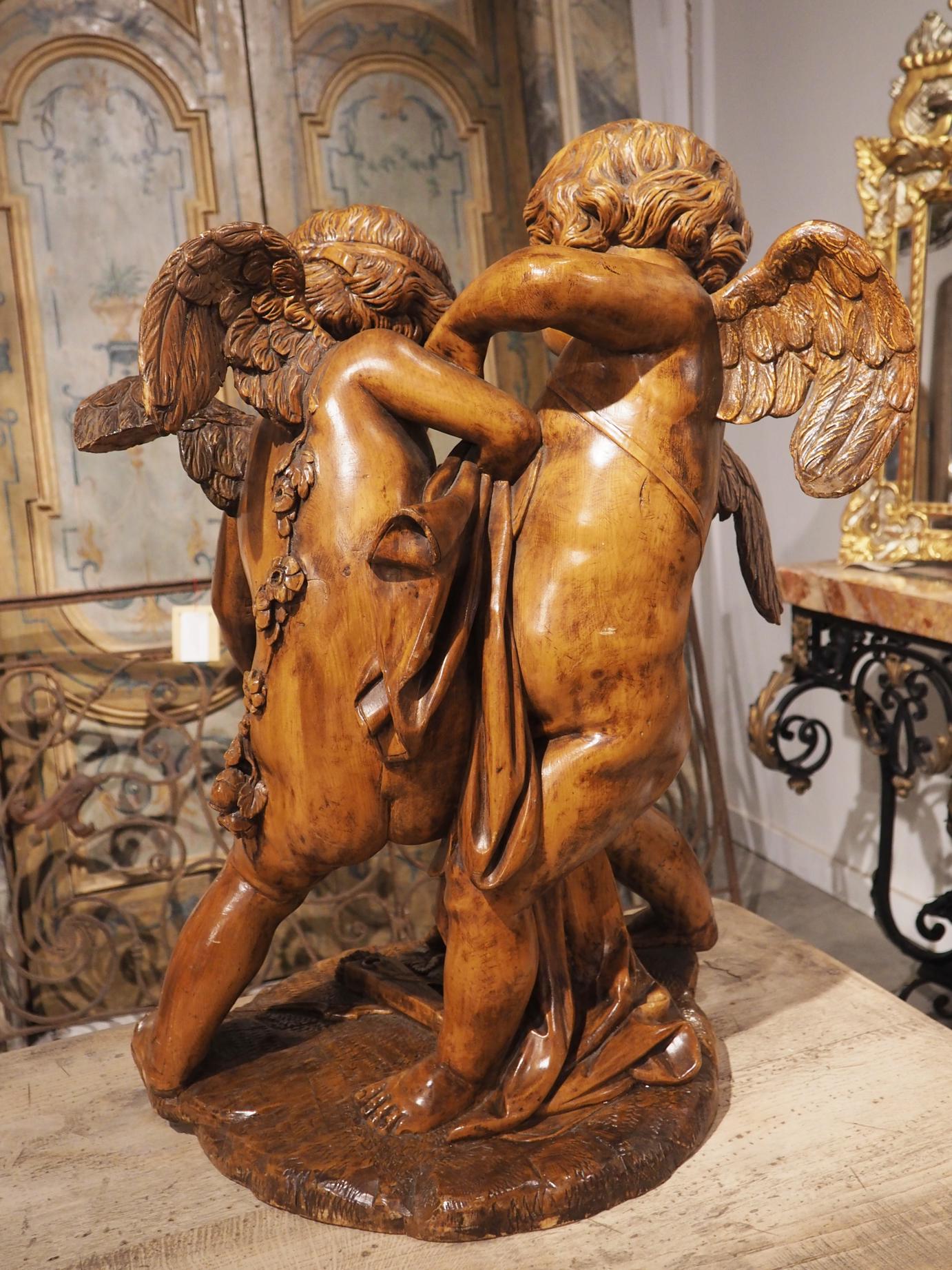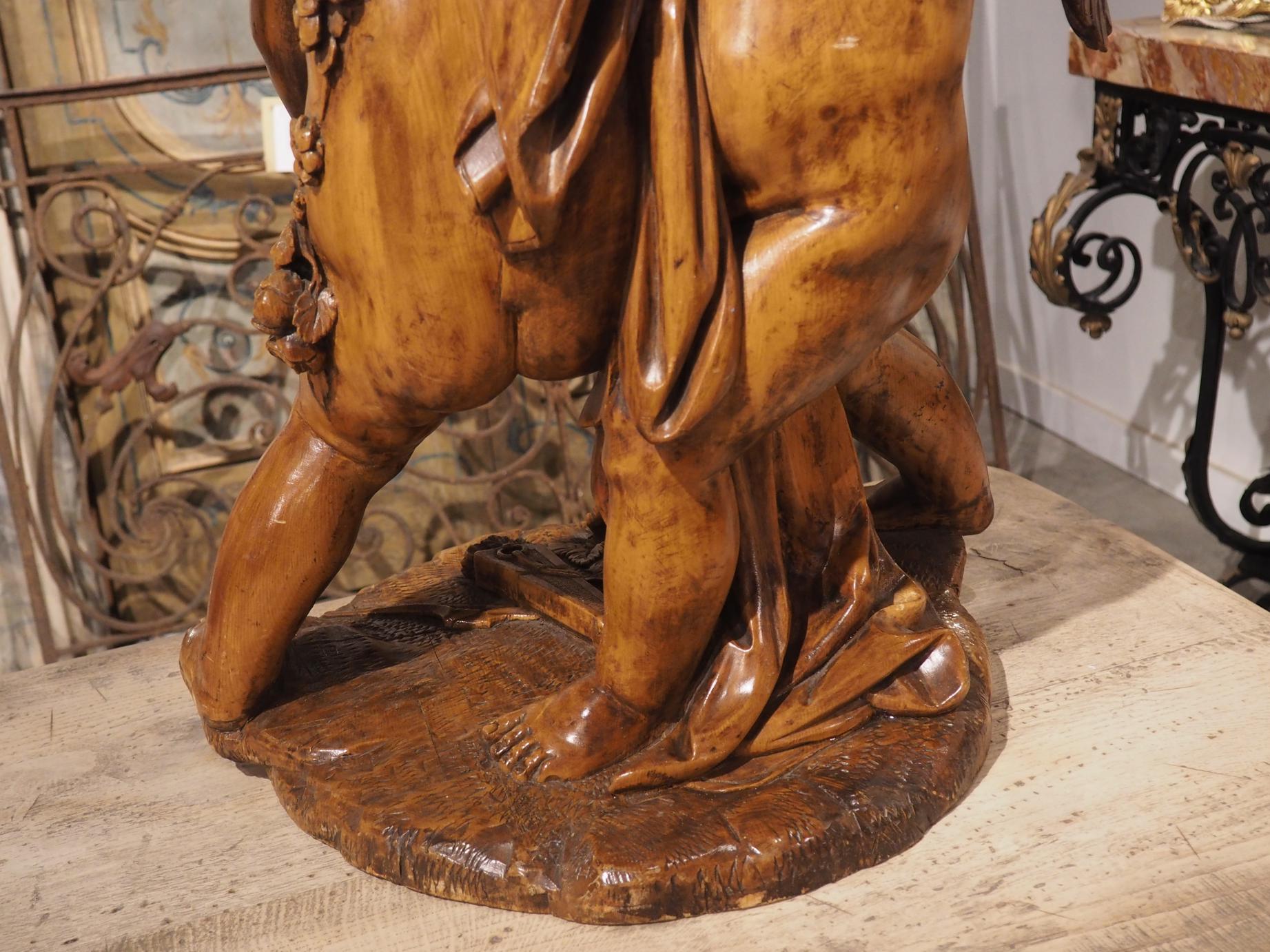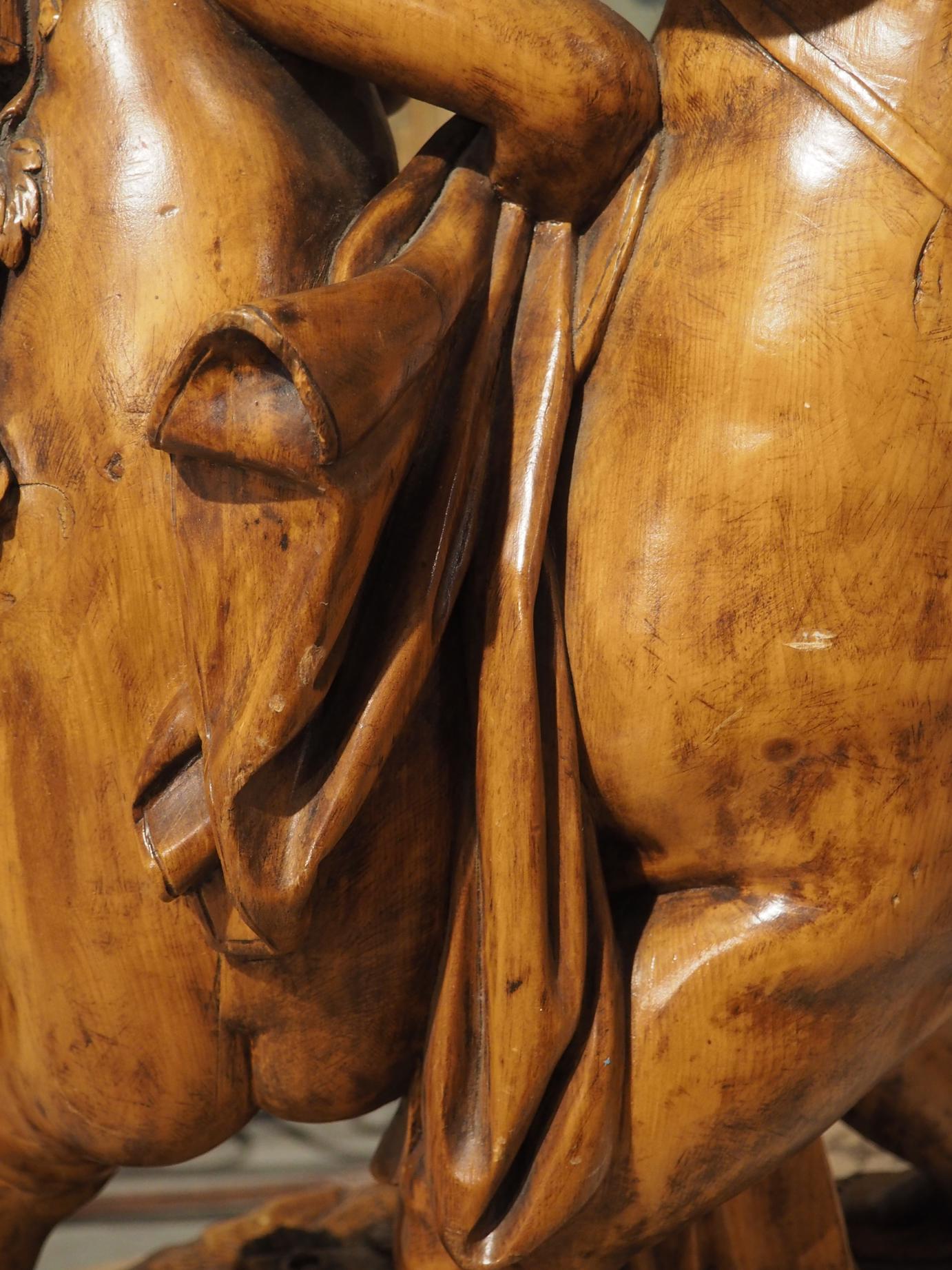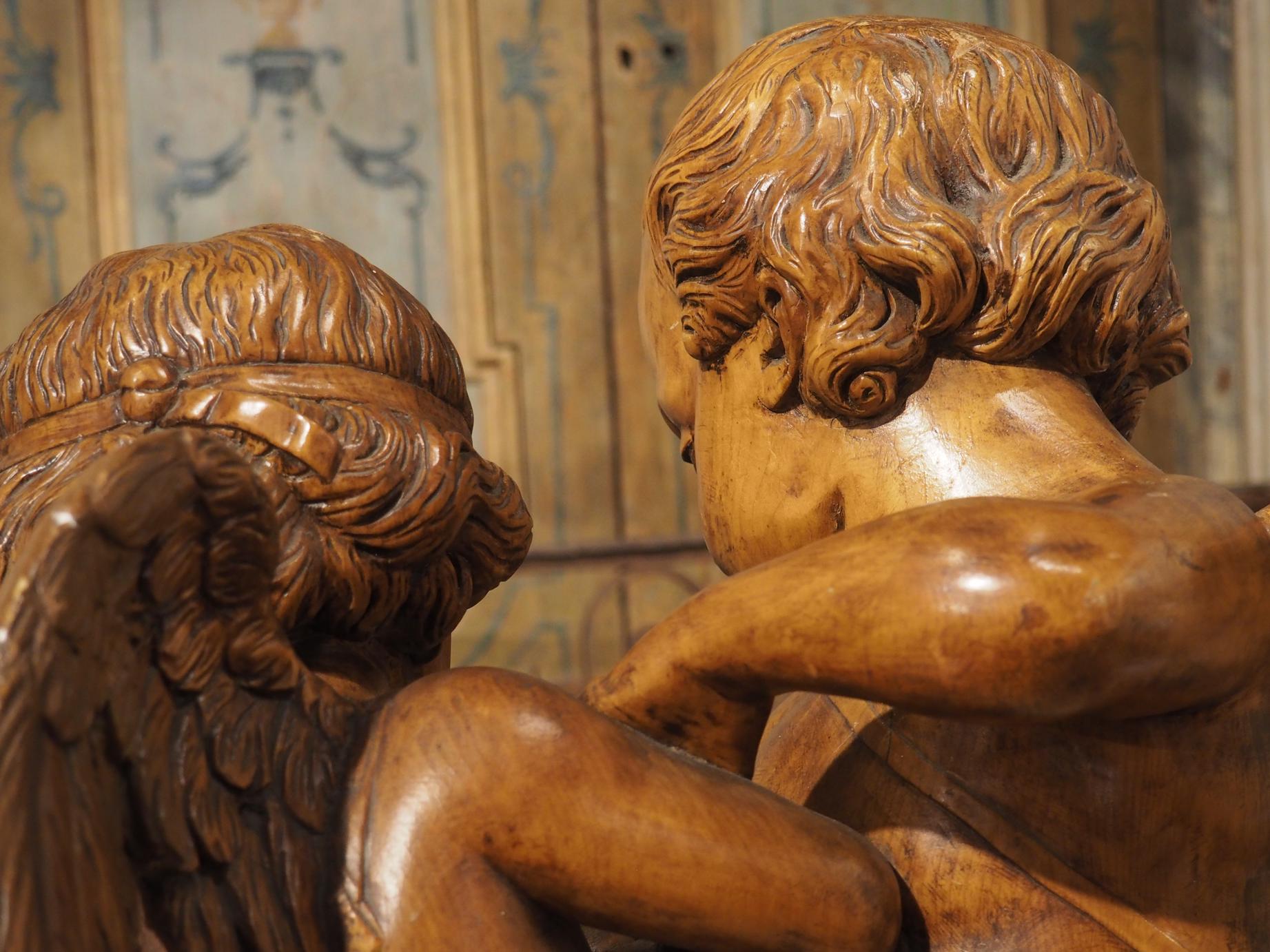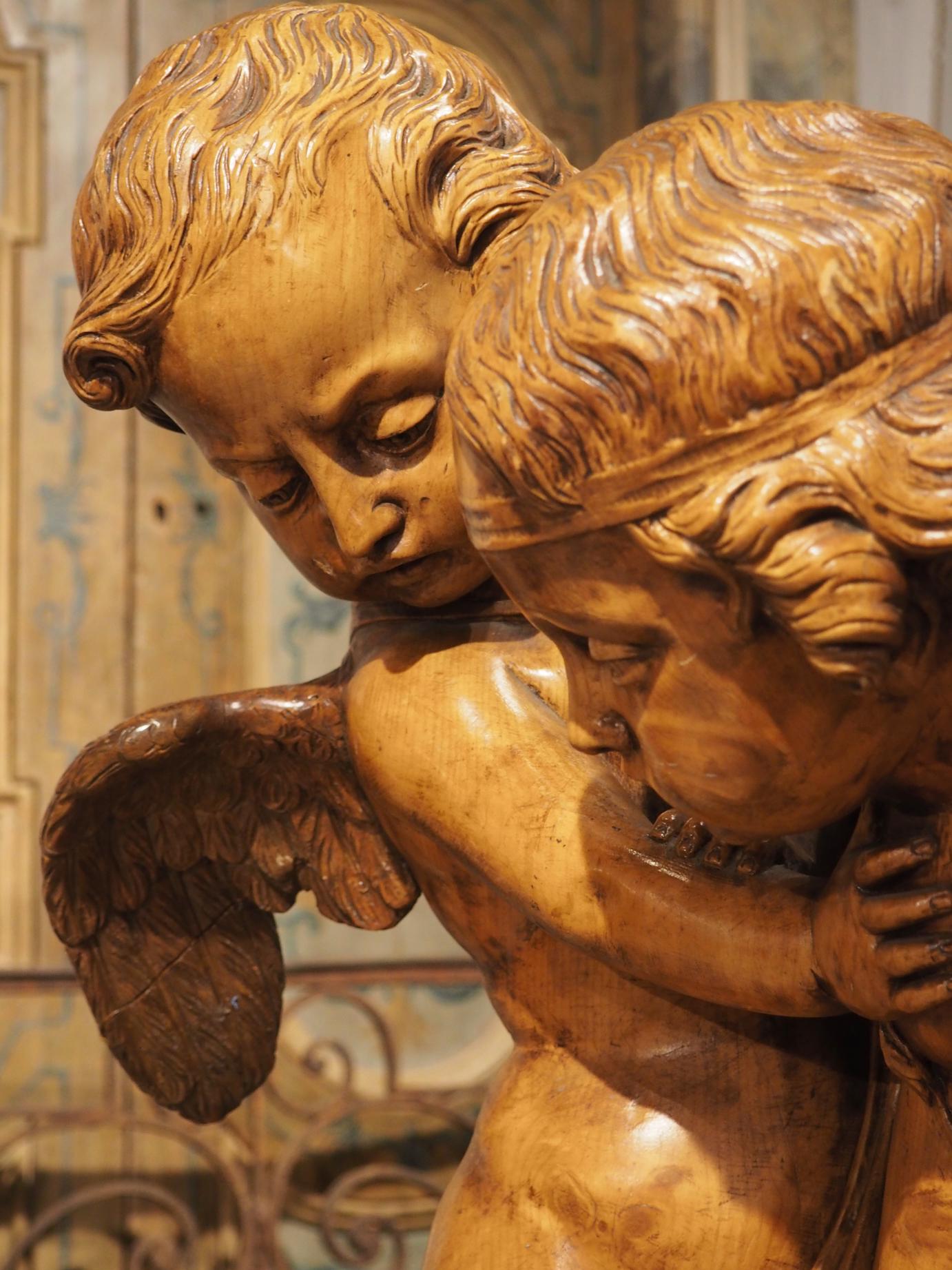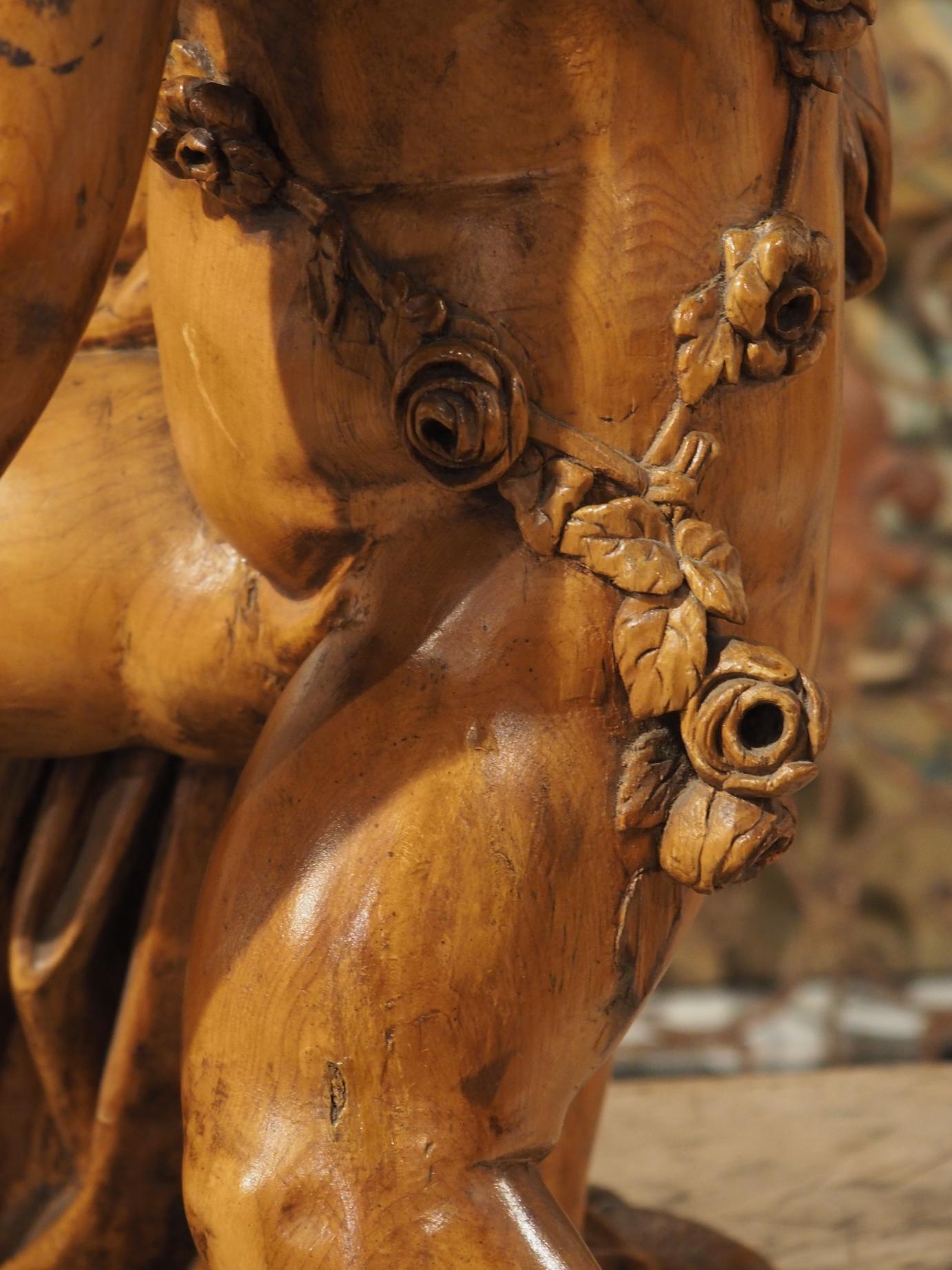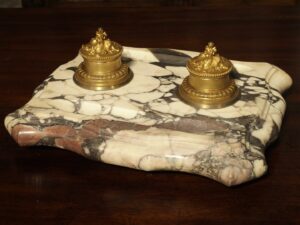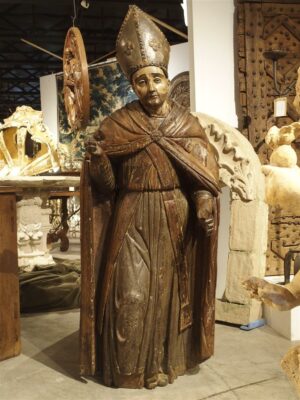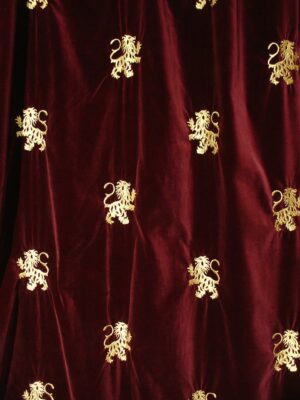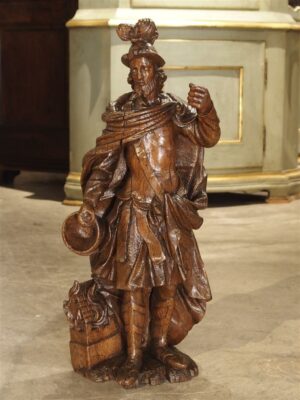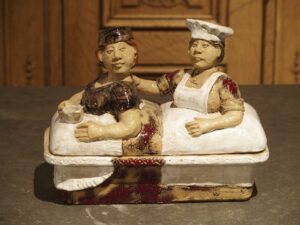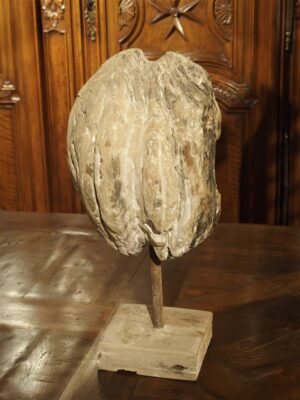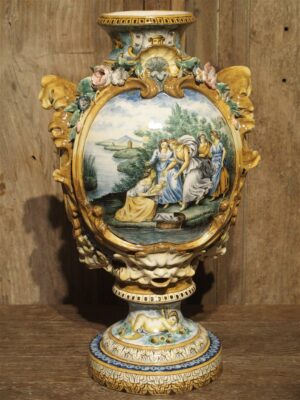After the original 18th century sculpture by Falconet, this circa 1850 hand-carved French wooden sculpture depicts the Erotes brothers, Eros and Anteros, contesting a flaming heart (symbolic of passion) on foliate-covered ground. A rose (representing love) lays in between the heart and a quiver of arrows on top of a bow. The cupid on the right has longer hair, kept in place by a headband. He is also wearing a floral sash as he reaches towards the heart with his left hand. The cupid on the left is slightly taller, with larger wings and trying to push his brother back. A long piece of fabric hangs between them, folded over itself on the ground.
The tale of the brothers is quite fascinating: Aphrodite was concerned that Eros would never grow because he was too busy distributing love. Aphrodite later gave birth to another son, Anteros. Whenever Eros was near Arteros, Eros would begin to grow; alternatively, when separated, Eros would revert to his original size. Because of this relationship, Eros was deemed the god of love, while Anteros is the god of requited love, or love returned. Anteros is generally depicted with longer hair, making him the cupid reaching for the heart, while Eros being larger can be attributed to growth from being in close proximity to his brother.
Etienne Falconet, the sculptor of the original work, also has quite an interesting story. Born into a poverty-stricken family in Paris in 1716, Falconet was initially in training to become a carpenter. In his leisure time, he made clay figures, which led to his discovery by the French sculptor, Lemoyne, who would become Falconet’s teacher. Falconet garnered attention from the public after exhibiting at the Salons in the mid-1750’s, and by 1757, he was appointed as director of sculpture at the new Sèvres manufactory. In 1766, Falconet left his post in Sèvres to begin commissioned work for Catherine the Great of Russia, completing his most famous work, The Bronze Horseman, in 1782. During his life, Falconet also studied Greek and Latin and wrote several volumes of literary works. His writings and his sculptures can be seen in museums across the world.
The sculpture seen here measures over 30 inches tall and features a rich, golden brown patina. The quality of the work is instantly confirmed by the proportion, dynamism, and details of the subjects. It will make for a fantastic decorative element in any niche, or on any pedestal or center table.
CONDITION: Very good antique condition with light nicks, and wear. Old repairs visible with some losses (part of wing tip and possibly a missing element from the back of the cupid on the left)



